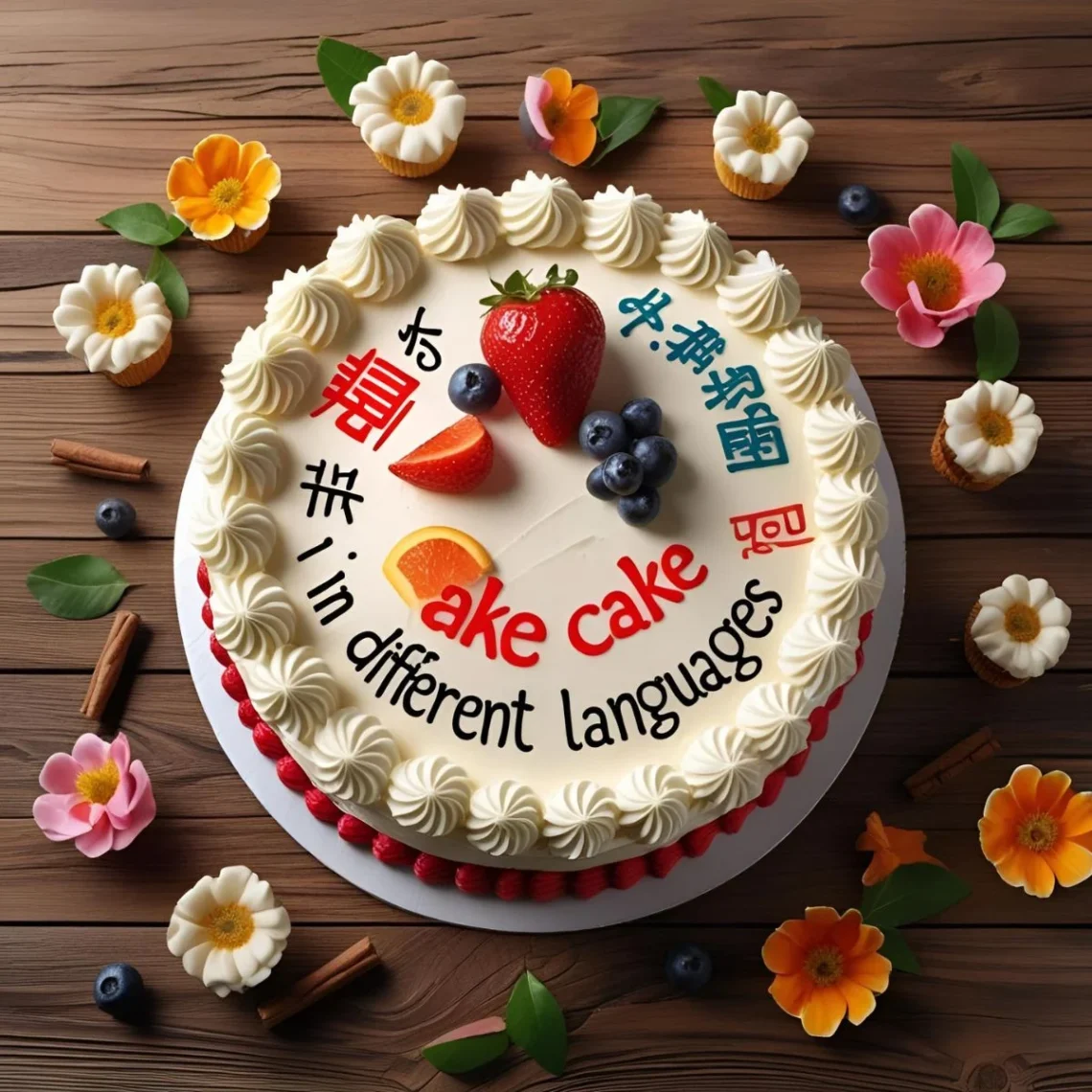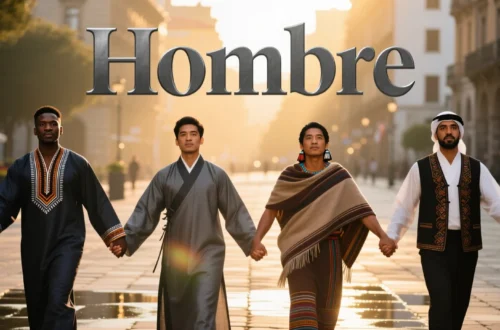Imagine a warm summer afternoon, gathered with friends, as the scent of a freshly baked cake fills the air. For me, it was my grandmother’s chocolate cake, lovingly called “torta” in her native Italian, that sparked joy and connection.
Across the globe, the word for “cake” evokes similar feelings of celebration and comfort, yet each culture adds its unique flavor. From bustling Parisian patisseries to vibrant Indian bakeries, the term for “cake” reflects shared human delight, shaped by diverse traditions.
Let’s embark on a global journey to explore how this sweet treat is named and cherished worldwide.
Reference Table: “Cake” in Different Languages
| Language | Word/Phrase | Cultural/Linguistic Insight |
|---|---|---|
| French | Gâteau | Suggests elegance, often linked to intricate patisserie creations. |
| Spanish | Torta | Also used for flatbreads in some regions, showing versatility. |
| Italian | Torta | Refers to both sweet cakes and savory pies, reflecting culinary diversity. |
| German | Kuchen | A broad term for cakes and pastries, tied to cozy gatherings. |
| Mandarin | Dàngāo (蛋糕) | Literally “egg cake,” highlighting key ingredients. |
| Hindi | Kek | Borrowed from English, popular in urban India for modern cakes. |
| Japanese | Kēki (ケーキ) | Adopted from English, associated with Western-style cakes. |
| Korean | Keikeu (케이크) | Reflects influence of Western baking, often for celebrations. |
| Arabic | Ka’ak (كعك) | Used for cakes and cookies, tied to festive occasions. |
| Swahili | Keki | Borrowed from English, common in East African celebrations. |
| Zulu | Ikhekhe | Derived from English, used for birthday and wedding cakes. |
| Yoruba | Àkàrà oyinbo | Literally “white man’s cake,” distinguishing Western-style cakes. |
| Maori | Keke | Reflects European influence, used in communal gatherings. |
| Hawaiian | Kika | Associated with festive events, often paired with tropical flavors. |
| Cherokee | Gadodi | Refers to sweet baked goods, tied to community feasts. |
European Languages: A Slice of Tradition
European languages offer a rich array of terms for “cake,” each tied to cultural rituals. For example, in French, “gâteau” evokes the elegance of patisserie creations, like layered opera cakes enjoyed in Parisian cafés. Meanwhile, Spanish uses “torta,” a term that spans sweet cakes and savory flatbreads in regions like Mexico. In Italian, “torta” covers both sweet desserts and savory pies, showcasing Italy’s love for versatile baking. A family in Rome might serve “torta della nonna” for a special occasion. Additionally, German’s “Kuchen” refers to cakes and pastries, often enjoyed during cozy “Kaffee und Kuchen” gatherings. These terms reflect Europe’s blend of indulgence and tradition, from France’s refined sweets to Germany’s hearty bakes.
Asian Languages: Sweet Fusion of Cultures
Asia’s diverse languages reveal unique terms for “cake,” shaped by local and global influences. For instance, in Mandarin, “dàngāo” (egg cake) highlights key ingredients, used for fluffy sponge cakes at Chinese birthdays. In Hindi, “kek,” borrowed from English, is popular in urban India, where bakeries offer everything from chocolate to mango cakes. Similarly, Japanese uses “kēki,” adopted from English, for Western-style cakes like strawberry shortcake, a Christmas favorite. In Korean, “keikeu” reflects Western baking trends, often featured in elaborate birthday celebrations. Meanwhile, Arabic’s “ka’ak,” used across over 20 countries like Lebanon and Egypt, covers cakes and cookies, often served during Eid festivities. These terms show Asia’s blend of tradition and modernity, from ancient recipes to globalized sweets.
African Languages: Cakes in Community
In African languages, the term for “cake” often ties to communal joy. For example, Swahili, spoken in countries like Kenya and Uganda, uses “keki,” borrowed from English, for cakes at weddings and birthdays. In Zulu, “ikhekhe” is a similar loanword, popular in South Africa for celebratory cakes. Additionally, Yoruba’s “àkàrà oyinbo” (white man’s cake), used in Nigeria, distinguishes Western-style cakes from traditional sweets. Across over 20 African countries, these terms are linked to shared moments, like cutting a cake at a Nigerian wedding or a Kenyan birthday, where communities gather to celebrate.
Indigenous & Island Languages: Sweet Bonds
Indigenous and island languages offer terms for “cake” that reflect communal traditions. For instance, Maori in New Zealand uses “keke,” influenced by European settlers, for cakes at community feasts. In Hawaiian, “kika” is tied to festive events, often featuring tropical flavors like pineapple. Similarly, Cherokee’s “gadodi” refers to sweet baked goods, enjoyed during tribal gatherings. In Samoan, “keke” is used for cakes at celebrations like birthdays, reflecting Pacific hospitality. Across these cultures, from Hawaii to the Cherokee Nation, cakes symbolize shared joy, often baked for communal events.
Cultural Insights: The Evolution of Cake
The word for “cake” has evolved with culinary history. In ancient Rome, “placenta” referred to layered baked goods, an early cake ancestor. In medieval Arabic culture, “ka’ak” was tied to festive sweets, influencing modern usage. Moreover, in African traditions, terms like “keki” emerged with colonial influences, blending local and Western baking. In Asia, words like “dàngāo” reflect modern baking’s rise, while in Europe, “gâteau” carries centuries of patisserie artistry. These terms are more than names—they carry stories of trade, colonization, and celebration, uniting cultures through the universal love of sweets.
Proverbs and Sayings: Sweet Wisdom
- French: “On ne peut pas avoir le gâteau et le manger aussi.” (You can’t have your cake and eat it too.) Reflects life’s trade-offs.
- Hindi: “Meetha muh, meethi baat.” (Sweet mouth, sweet words.) Ties sweetness to kindness.
- Swahili: “Keki ni tamu, lakini usile yote.” (Cake is sweet, but don’t eat it all.) Encourages moderation.
- Japanese: “Kēki no ichigo wa saigo ni taberu.” (Save the strawberry on the cake for last.) Suggests savoring the best moments.
- Yoruba: “Adun ni oyinbo àkàrà.” (Sweetness is the white man’s cake.) Celebrates the joy of cakes.
FAQs
Why are some terms for “cake” similar across languages?
Many languages borrow from English (e.g., Hindi’s “kek,” Swahili’s “keki”) due to colonial or global influences, while others share Indo-European roots.
What’s the oldest term for “cake”?
Latin’s “placenta” (circa 1st century BCE) referred to early layered bakes, an ancestor of modern cakes.
How do cultures shape the term’s use?
In communal cultures (e.g., African, Indigenous), cakes are tied to group celebrations, while in individualistic cultures (e.g., European), they may focus on personal indulgence.
Conclusion
From “gâteau” in France to “keki” in Tanzania, the word for “cake” is a universal symbol of joy and connection. Each term, whether the elegant “dàngāo” in Mandarin or the communal “keke” in Maori, reflects cultural traditions while celebrating humanity’s love for sweets. Consequently, these words remind us that a simple cake can unite people across borders. How do you say “cake” in your language, and what memories does it bring? Share your stories below—we’d love to hear your sweet tales!






